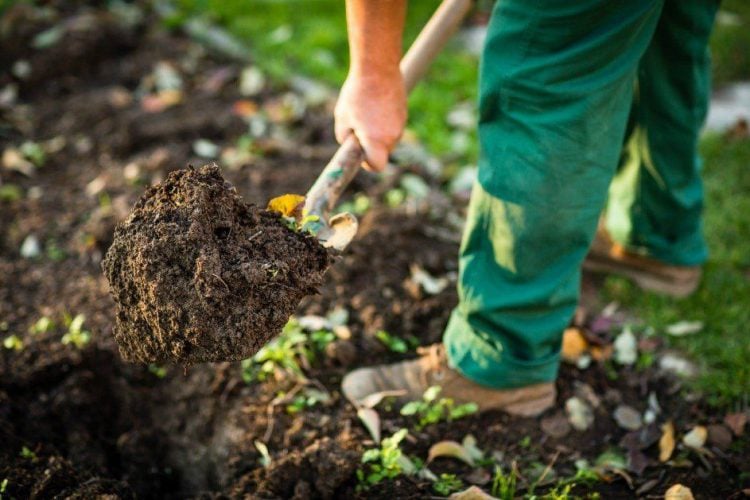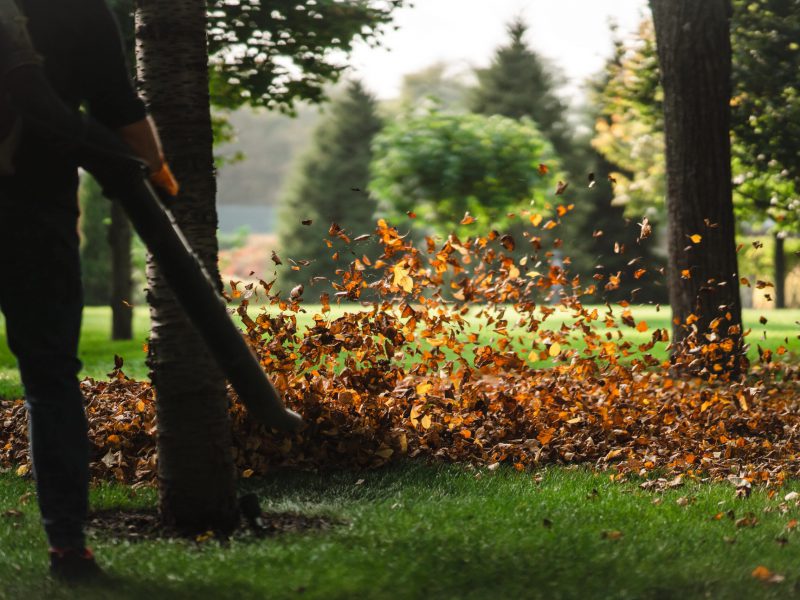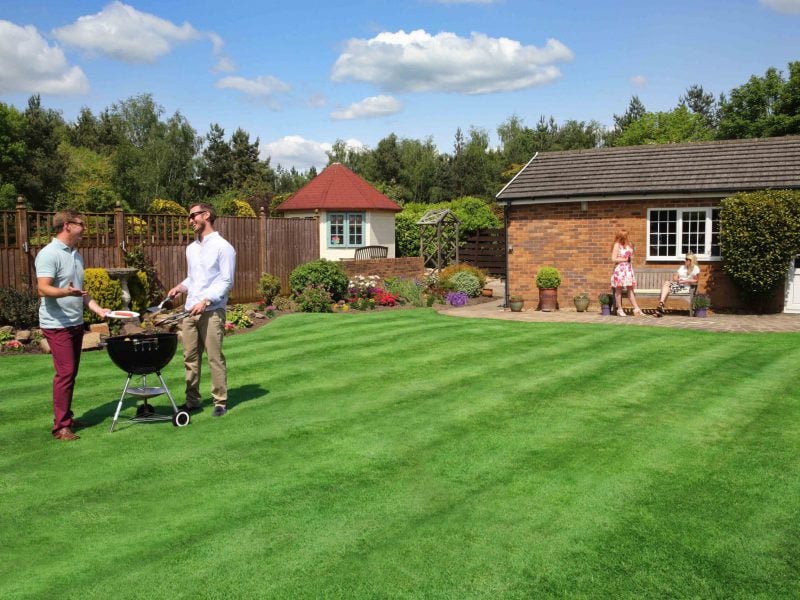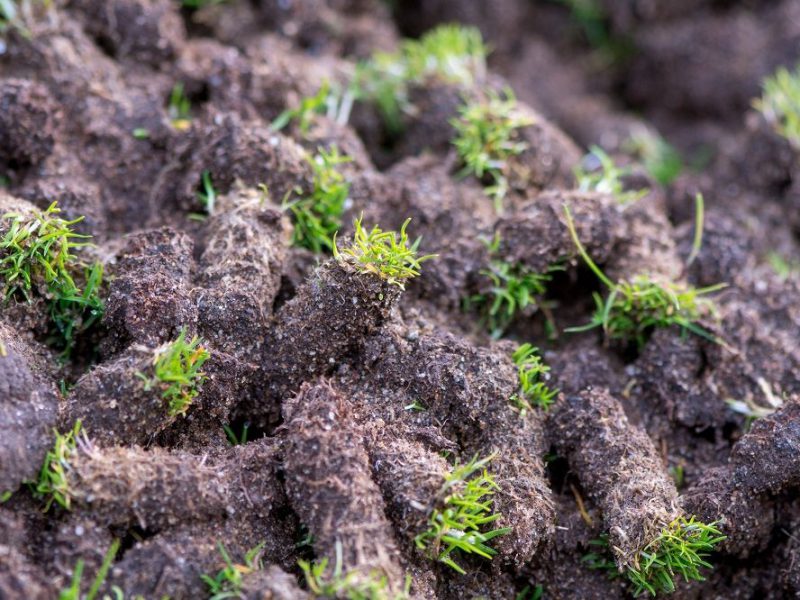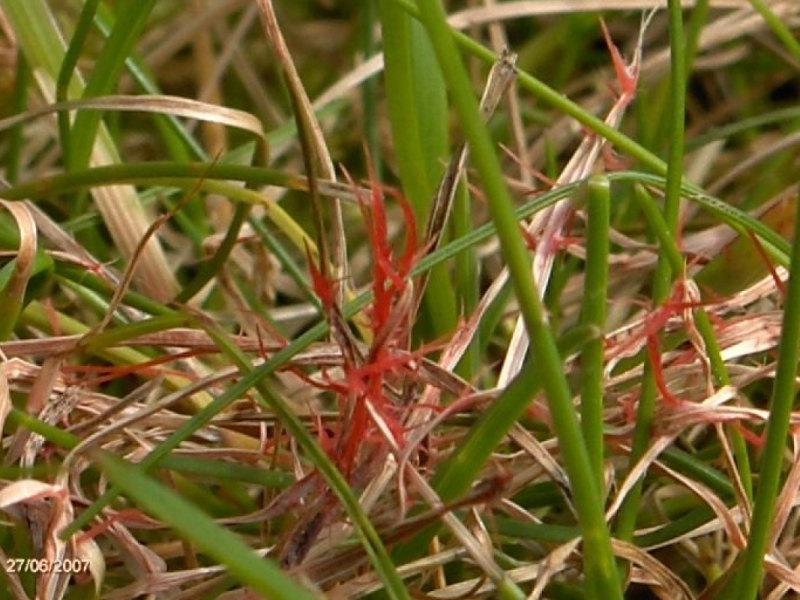Causes of Moss
Moss grows in lawns due to soil compaction and excess thatch, mostly growing in lawns with extreme moisture or weak turf. The wider environmental causes of moss can be varied, chief of which are shade, soil type, drought, excessive thatch and drainage. Also incorrect lawn care practices like over or under mowing, lack of aeration and use of strong fertilisers. Moss control and removal is an essential part of this lawn care.
To ensure that your lawn is kept moss-free all year round it is important to remove it to make sure that it stays strong, healthy and maintains a lush and green appearance.
Moss is an extremely adaptable, resilient plant that flourishes in areas of shade, moisture and poor turf quality. It has a spongy sensation underfoot and consists of dense, green clumps or mats. Without keeping it in check, it is prone to take over your lawn and prevent healthy grass growth.
In the UK, there are over 600 species of moss, all of which are highly resilient, adaptable and non-flowering. If left untreated moss will continue to spread over your lawn, diminishing the grass growth and eventually suffocating the grass entirely.
Drainage
One of the major causes of moss invasion is the collection of water, on the surface of the lawn. This is most commonly caused by compacted soil which creates a poor drainage system during rainfall. Water that isn’t drained away efficiently and therefore remains on the surface of your lawn creates the perfect environment for moss to grow. If your moss is caused by a drainage issue, regular hollow tine aeration can resolve this and help promote a healthy, moss-free lawn. Aeration allows better drainage throughout the soil, stopping the area from becoming waterlogged – alleviating the issue.
Shade
Lack of sunlight is also a contributing factor to moss invasion. If your garden has a large amount of shade cover and foliage you are more likely to experience moss growth. Shade can be caused by buildings, trees, plants, and other vegetation in the garden area. For this reason, moss is more prevalent during winter due to a lack of sunlight when compared to the warmer Spring and Summer months. Reducing shade and allowing more sunlight to reach the grass can help stop moss growing, by cutting back overhanging plants or trees to allow more natural light to reach your lawn.
It is also important to ensure that when Autumn comes the fallen leaves are cleared away from your lawn regularly via raking and removing other debris. Leaves carpeting your lawn creates a damp, temperate environment where sunlight cannot infiltrate, making it a perfect place for moss to grow and stunt your lawn.
Mowing
If your lawn is mown too short during the growing season, it can be placed under significant stress, leaving it thin and weak. This allows moss and other invasive weeds the opportunity to invade. If your lawn has developed sparse areas through Winter, it is very likely that moss will become a long-term issue. To retain a healthy, green appearance your lawn should not be mowed too short, ideally no less than 25mm in height this ensures the grass is not damaged and the growth is not slowed. During warm, dry periods you should increase the height of your normal cut to 40-50mm in order to retain its moisture and green appearance. Never cut the grass to less than a third of the length of the blades.
Preventing & Treating Moss
Lawn Treatments
A lawn that is neglected and not treated properly can lead to moss invasion, but healthy maintenance practices such as scarifying and aeration carried out regularly can prevent moss. Neglecting these treatments, however, will be detrimental to the wellbeing of your lawn.
To prevent moss growth it is important to keep your lawn regularly fed. At Greensleeves, our specially formulated treatments keep moss under strict control, so you don’t have to worry about struggling with moss overgrowth. Treatments are applied throughout the year to significantly reduce the vigour of moss, conversely encouraging the grass to thrive.
If moss is already a key issue for your lawn, your local Greensleeves Lawn Care Expert will be able to assess the situation, advise on the best course of action, and treat this accordingly for you with a specially formulated product. Scarification removes a layer of moss, giving the grass a better chance of growing into the areas of the lawn previously invaded.
It is vital to treat the cause of the problem, not just the moss itself, to reduce the likelihood of it returning. At Greensleeves, we build moss control into our annual treatment programme to ensure our customer’s lawns are always prepared to combat moss invasion.
Contact Us
If you have a moss invasion problem and want our help preventing it, get in touch with Greensleeves today to discuss which of these would be best for you!

